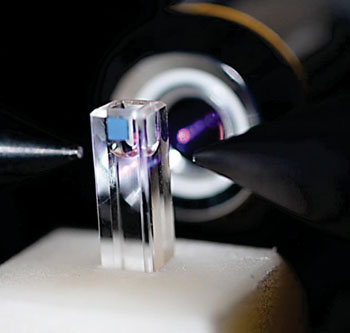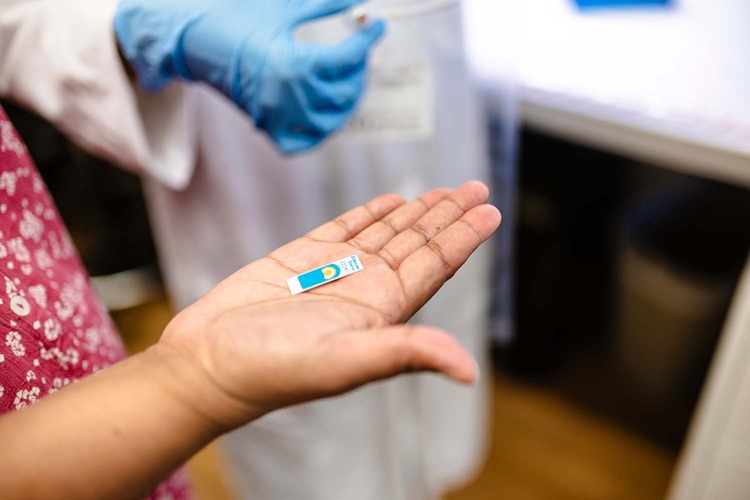Blood Test Detects Tumor Markers Using Laser-Stimulated Fluorescence
By LabMedica International staff writers
Posted on 10 Apr 2014
Tumor markers in the blood help determine whether the patient is afflicted with a malign tumor and whether it is excreting markers more vigorously involving highly specific proteins.Posted on 10 Apr 2014
An increased concentration in the blood provides one indication of the disease for physicians, but it has been quite expensive in time and effort to detect the markers thus far and to be able to detect a single specific one, scientists must first separate and purify the blood in several steps and then isolate the marker.

Image: The concentration of biological molecules in a sample can be observed visually using laser-stimulated fluorescence (Photo courtesy of Fraunhofer IPA).
Scientists at the Fraunhofer Institute for Manufacturing Engineering and Automation IPA (Mannheim, Germany) have developed a one-step analysis to detect tumor biomarkers. The difficulty in detecting specific molecules in the blood or urine lies in the enormous number of substances that are mixed in the sample. They cause a high level of background noise that masks the desired signal and the signal from the protein being searched for can no longer be distinguished.
To improve the signal to noise ratio, the scientists used magnetic beads, which are particles only a few micrometers in size that have a magnetic core. If a magnet is positioned externally on the test tube, the beads can be arrested or steered. This technique is already in use. To isolate molecules from a solution like blood, the surface of the beads with were coated with specialized antibodies. The proteins that are being searched for wind past the beads, and the antibodies attach to them. If the magnet is held to the outside of the test tube, the beads together with the desired proteins stick to the interior surface of the tube, while the rest of the solution can be easily removed.
Additional means were developed with the samples exposed to the coated beads, but also to additional antibodies that have fluorescent markers bound to them. These antibodies attach themselves to the proteins being searched for and cause them to fluoresce. The optical signal is very weak though, and would normally disappear in the background noise. When using an alternating magnetic field, the magnetic beads flock together in rhythm, and the fluorescent markers bound to the surfaces emit their light in synchrony and radiate considerably more brightly than any given bead by itself. The advantage of this visualization technique is that the optical signal provides immediate insight about whether a tumor marker protein is present in the blood. The analysis equipment was presented at the Analytica international trade fair held April 1–4, 2014, in Munich (Germany).
Related Links:
Fraunhofer Institute for Manufacturing Engineering and Automation














